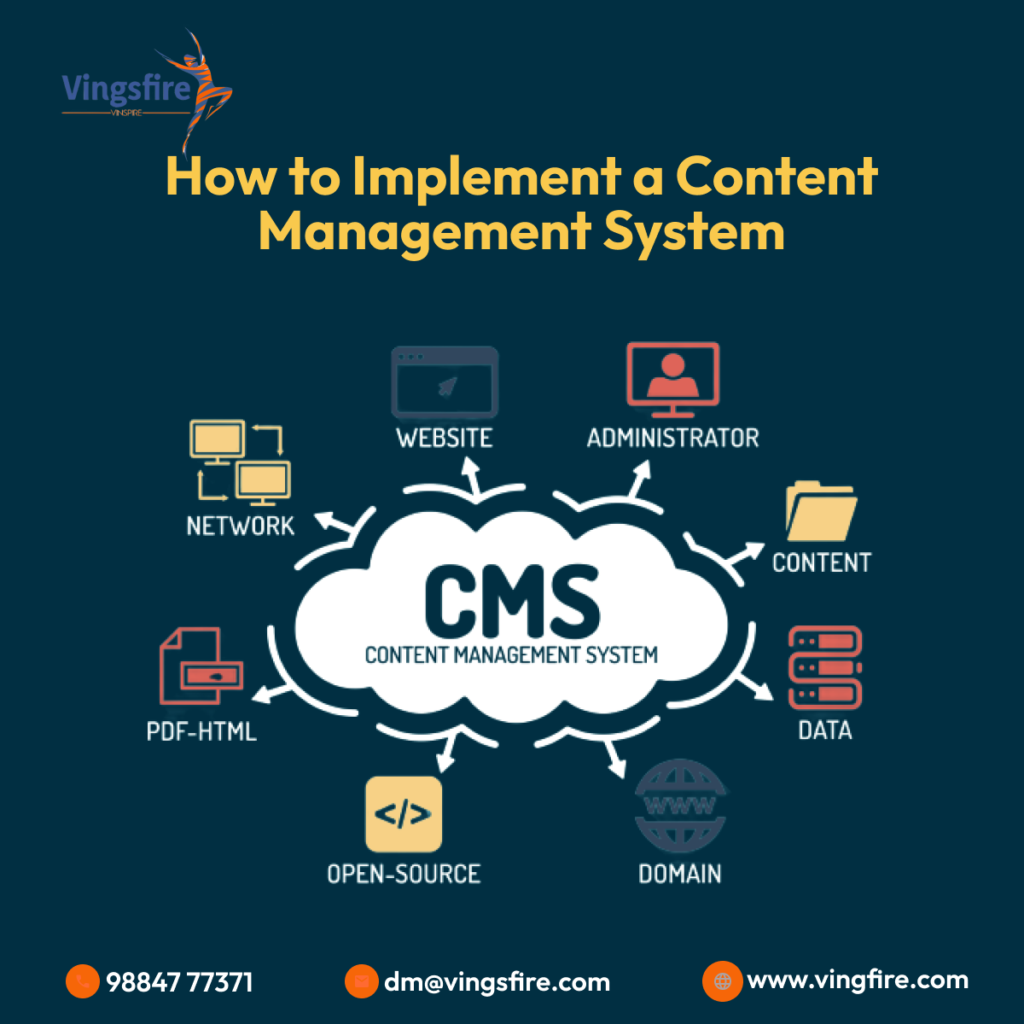
In today’s digital age, managing content efficiently is crucial for organisations to maintain a competitive edge and engage their audience effectively. Content Management Systems (CMS) provide a centralized platform for creating, editing, organizing, and publishing digital content across websites, blogs, and other online channels. Implementing a CMS can streamline workflows, enhance collaboration, and empower content creators to deliver engaging and relevant experiences to their audience. Join us as we embark on a journey to explore the essential steps and best practices for implementing a Content Management System successfully.
Chapter 1: Defining Objectives and Requirements
Before diving into the implementation process, it’s essential to define clear objectives and requirements for the CMS. This involves identifying the specific needs and goals of the organization, such as improving content creation efficiency, enhancing user experience, or increasing website scalability. Additionally, stakeholders should collaborate to outline functional and technical requirements, including content types, workflow processes, integration capabilities, and scalability considerations. By establishing a solid foundation of objectives and requirements, organisations can ensure that the chosen CMS aligns with their strategic vision and business needs.
Chapter 2: Selecting the Right CMS Platform
With objectives and requirements in hand, the next step is to evaluate and select the most suitable CMS platform for the organization. There are numerous CMS options available, ranging from open-source solutions like WordPress and Drupal to proprietary platforms like Adobe Experience Manager and Sitecore. When selecting a CMS platform, organisations should consider factors such as ease of use, flexibility, scalability, security, support, and total cost of ownership. Additionally, conducting thorough research, seeking recommendations, and evaluating demo versions can help organisations make informed decisions and choose a CMS platform that meets their specific needs and preferences.
Chapter 3: Planning Content Architecture and Design
Once a CMS platform has been selected, the focus shifts to planning content architecture and design. This involves defining the structure and organization of content within the CMS, including categories, tags, metadata, and navigation menus. Content creators should collaborate with information architects and designers to ensure that the CMS supports intuitive navigation, consistent branding, and user-friendly interfaces. Additionally, organizations should establish content governance policies and style guidelines to maintain quality, consistency, and compliance across all content assets. By investing time and effort in planning content architecture and design, organisations can create a solid framework for content management and delivery.
Chapter 4: Customising and Configuring the CMS
After planning content architecture and design, the next step is to customize and configure the CMS according to the organization’s requirements. This involves setting up user roles and permissions, configuring content workflows, and integrating third-party tools and services. Depending on the chosen CMS platform, organisations may have access to a wide range of plugins, modules, and extensions that can extend the functionality of the CMS and meet specific needs. Additionally, organisations should ensure that the CMS is optimised for performance, security, and scalability by implementing best practices for server configuration, caching, and database management.
Chapter 5: Migrating Existing Content
For organisations that are transitioning from legacy systems or migrating from another CMS, content migration is a critical step in the implementation process. Content migration involves transferring existing content assets, such as articles, images, videos, and documents, from the old system to the new CMS platform. This process requires careful planning, data mapping, and validation to ensure that content is migrated accurately and without loss or corruption. Depending on the complexity of the migration, organisations may choose to perform the migration manually, using automated tools, or by enlisting the help of professional services. By prioritising data integrity and quality assurance, organisations can ensure a smooth and successful content migration process.
Chapter 6: Training and Onboarding Users
With the CMS platform configured and content migrated, the next step is to train and onboard users to ensure adoption and proficiency. Content creators, editors, administrators, and other stakeholders should receive comprehensive training on how to use the CMS effectively, including creating and editing content, managing workflows, and utilising advanced features and functionalities. Training sessions can be conducted in-person, virtually, or through self-paced online courses, depending on the organization’s preferences and resources. Additionally, organisations should provide ongoing support and resources, such as user guides, tutorials, and help desk assistance, to empower users and address any questions or challenges that may arise.
Chapter 7: Implementing Governance and Maintenance Processes
Once the CMS is up and running, it’s essential to establish governance and maintenance processes to ensure its ongoing success and sustainability. This involves defining roles and responsibilities for content management, implementing content review and approval workflows, and monitoring performance and usage metrics. Additionally, organizations should regularly update the CMS platform, plugins, and extensions to ensure compatibility, security, and performance. By implementing robust governance and maintenance processes, organisations can maximize the value of their CMS investment and drive continuous improvement in content management practices.
Conclusion:
As we conclude our exploration of implementing a Content Management System, it’s evident that success hinges on careful planning, strategic decision-making, and diligent execution. By defining objectives and requirements, selecting the right CMS platform, planning content architecture and design, customizing and configuring the CMS, migrating existing content, training and onboarding users, and implementing governance and maintenance processes, organizations can streamline their content management workflows and deliver compelling digital experiences to their audience. With the right approach and mindset, the implementation of a Content Management System can be a transformative journey that empowers organizations to thrive in the digital age.
